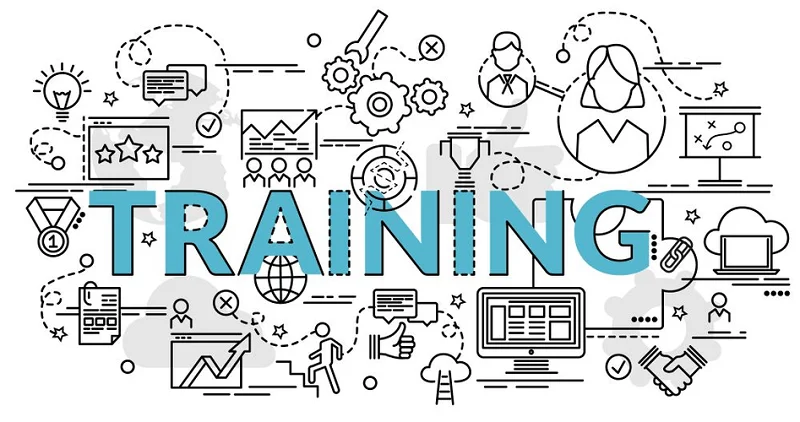These guide simulations, will pave the means in which for the development of extra advanced and efficient AI-driven processes that may revolutionize varied industries and domains. The future of AI lies in the effective orchestration and collaboration of specialized brokers, and manually simulating Agentic Workflows in chatbots serves as an important step in realizing this vision. Agent functions, on the opposite hand, check with the particular capabilities or skills that an agent possesses. These features define what an agent can really do or carry out inside its designated sort or function.
Solutions
To do that, they make the most of sensors, APIs, and real-time knowledge streams to understand their surroundings. For instance, IoT gadgets equipped with sensors can monitor temperature, strain, or movement in industrial automation systems. While some could use the terms “agentic architectures” and “agentic workflows” interchangeably, they really have an important distinction. By exploring and refining these workflows, we are ready to unlock the true potential of LLMs and AI brokers, driving innovation and productiveness in the rapidly evolving landscape of synthetic intelligence. The insights gained from manual simulations will form the means ahead for Agentic Workflows and their utility in real-world eventualities. It’s important to notice that the roles and capabilities of brokers can be dynamic and adaptable all through the Agentic Workflow.
As a result, agentic research assistants are capable of acquire deeper insights, establish tendencies over time, and compile full stories on matters Static Code Analysis versus simply retrieving current knowledge. At the time of writing, OpenAI, Perplexity, and Google all have their own model of Deep Research publicly obtainable. Retrieval-Augmented Technology (RAG) is a framework that augments the information of a LLM by offering it with related knowledge retrieved from an external knowledge source. Discover essentially the most highly effective agentic architectures, visually illustrated for instant understanding. AI Agents are outpacing traditional SaaS models with flexible, scalable pricing methods.
Discover how AI operational effectivity can help enterprises streamline workflows, reduce operational costs, enhance productivity, and cut back help burdens. AI-driven workflows break tasks into manageable pieces, enabling you to complete work sooner. Repetitive, multli-step tasks are handled seamlessly, liberating your staff to give attention to high-priority initiatives that drive impression. AI gathers knowledge, understands queries by way of NLP, and makes use of steady, deep learning to provide helpful, accurate solutions.

Like other kinds of software program solutions, it’s useful to think of this by way of the layers – the logical groupings of functions and responsibilities inside a system that outline how it operates. Here’s a breakdown of how we are ready to apply an agent with a planning pattern to this workflow. So, as a substitute, we’ve selected three frequent examples which would possibly be illustrative of what we’ve discovered so far, to assist solidify our understanding. As such, this pattern is best suited to scenarios where the duty at hand is open-ended, quality-sensitive, or even creative. For instance, drafting paperwork, producing code, tuning configurations, or other tasks the place there is no singular right answer. This is a half of why it’s so essential to know their perfect use cases in order to determine if they are essentially the most appropriate resolution for a given task.

We talked with a few of these consultants and canopy their classes discovered, observations and present work that can hopefully assist your AI development course of. But since they’re so new — and fairly complicated to construct — there’s no standardized means of building them right now. Fortunately, the sphere is evolving extraordinarily fast, and we’re beginning to see some design patterns emerge.
The rise of synthetic intelligence (AI) has pushed major modifications in how companies handle and optimize operations. First of all, we all know already that AI brokers are modular systems, with distinct, specialized elements that align with the underlying structure of workflows. Drafting data entries requires a high degree of contextual consciousness to succeed in an goal where there is not any clear binary correctness, making iterative refinement brokers a perfect addition to human users. Lastly, drafting knowledge-based articles is a strong https://www.globalcloudteam.com/ instance of a workflow that may be effectively managed utilizing agents with an iterative refinement pattern.
- As an instance of a course of the place there is not any singularly correct consequence, it’s important to have a solution in place that supports ongoing refinement, along with human input for the resources created.
- In ecommerce and retail, agentic workflows enhance buyer experiences by way of personalised recommendations, automated order processing, and dynamic pricing adjustments.
- By carefully designing and integrating these parts, developers can create powerful and specialised LLM brokers that excel in numerous duties, from syntactic operations to creative era and information retrieval.
- These guide simulations, will pave the best way for the development of more advanced and environment friendly AI-driven processes that can revolutionize numerous industries and domains.
- Imagine a company has an IT support chatbot that follows a rule-based automation system.
What Is Agentic Ai? A Beginner’s Guide
Agentic workflows are structured processes where AI brokers make selections, solve problems, and perform tasks with minimal human input. Planning is very efficient when the strategy to attain a final target is unclear and adaptability in the problem solving course of is paramount. If the primary attempt to repair the bug doesn’t work, the agent can read the error messages after execution and adapt its technique.
Alternatively, embedded brokers are light-weight, task-specific brokers that can be built-in inside existing providers, functions, or different solutions. These don’t essentially automate entire workflows however can be useful for streamlining high-volume tasks. Agent frameworks are used to coordinate agent habits, including task decomposition, reminiscence entry, device routing, and multi-agent collaboration. So, instruments like LangChain, CrewAI, and AutoGen help to prepare complicated workflows by connecting distinct modules.

Learning
When the complex question «E-book a flight to Paris after which discover a resort» is run, the root agent understands and it intelligently calls the flight_tool, will get the result, and then calls the hotel_tool. The to-and-fro communication between the foundation agent and its specialist instruments enabled a true multi-step workflow. When the Root Agent calls the Flight Agent as a sub-agent, the responsibility for answering the consumer is completely transferred to the Flight Agent. This usually results in incomplete or irrelevant solutions because the broader context of the initial multi-step request is lost, directly reflecting why the supervisor struggles as a «project manager» in these eventualities. Single-agent and multi-agent techniques represent two distinct approaches in synthetic intelligence, each with its own strengths and functions.
Every agent focuses on a different role, just like how a staff of specialists may collaborate on a project. Predictive analytics is the application of statistical algorithms and machine studying techniques to analyze information and forecast future outcomes. It permits AI systems to identify patterns and make informed predictions, enhancing total decision-making processes. In multi-agent techniques, AI Agents could depend on subagents, specializing in decided Agentic Workflows tasks. These subagents deal with smaller workflow elements, bettering general task completion by way of collaboration.